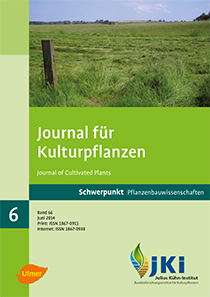Potential of ten alternative grass species under different cutting regimes in Central Europe
Keywords:
Grassland, cutting frequency, forage production, biofuel, weeds, wheatgrass, switchgrass, wildrye, tall fescue, redtop, orchardgrass, tall oatgrassAbstract
Perennial grasslands play an important role as an extensive CO2 sink. Fodder and biofuels can be produced in an ecologically acceptable manner on such sites. Projected future climate-change scenarios suggest that Central Europe’s grasslands will be increasingly affected by drought. In order to determine whether there is potential for some alternative drought-adapted grass species to contribute to herbage production for either forage or biomass, we tested the agronomic performance of ten grass species (Agropyron elongatum, Agropyron intermedium, Agropyron desertorum, Agropyron trachycaulum, Elymus hoffmannii, Elymus junceus, Bromus inermis, Bromus marginatus, Festuca arundinacea and Panicum virgatum) in comparison to four reference grasses (Dactylis glomerata, Arrhenatherum elatius, Agrostis gigantea and Agropyron repens). Experiments were conducted in small-plot cutting trials at two sites across two growing seasons with either one or multiple cuts per season.
In the one-cut system, P. virgatum provided the highest average annual dry matter (DM) yield (14 258 kg ha–1), followed by A. elongatum (13 086 kg ha–1). The multi-annual persistence of these two species under the experimental conditions was given only when P. virgatum was not harvested before freezing off and A. elongatum was harvested only once per year. Moreover, both species are susceptible to lodging. In the multiple-cut system, F. arundinacea showed a high yield (12 533 kg DM ha–1 average annual yield) and a low presence of associated weeds (only 0.1% surface area). Cultivating this grass species requires considering its only moderate competitiveness during the establishment phase. Based on the rapid establishment of A. trachycaulum, this species is expected to be best suited as a cover crop in seed mixtures. The yields of A. desertorum, A. trachycaulum, A. repens, E. junceus and B. marginatus were below the experimental average (9255 kg DM ha–1 at multiple cuttings).
DOI: 10.5073/JfK.2014.06.01, https://doi.org/10.5073/JfK.2014.06.01








